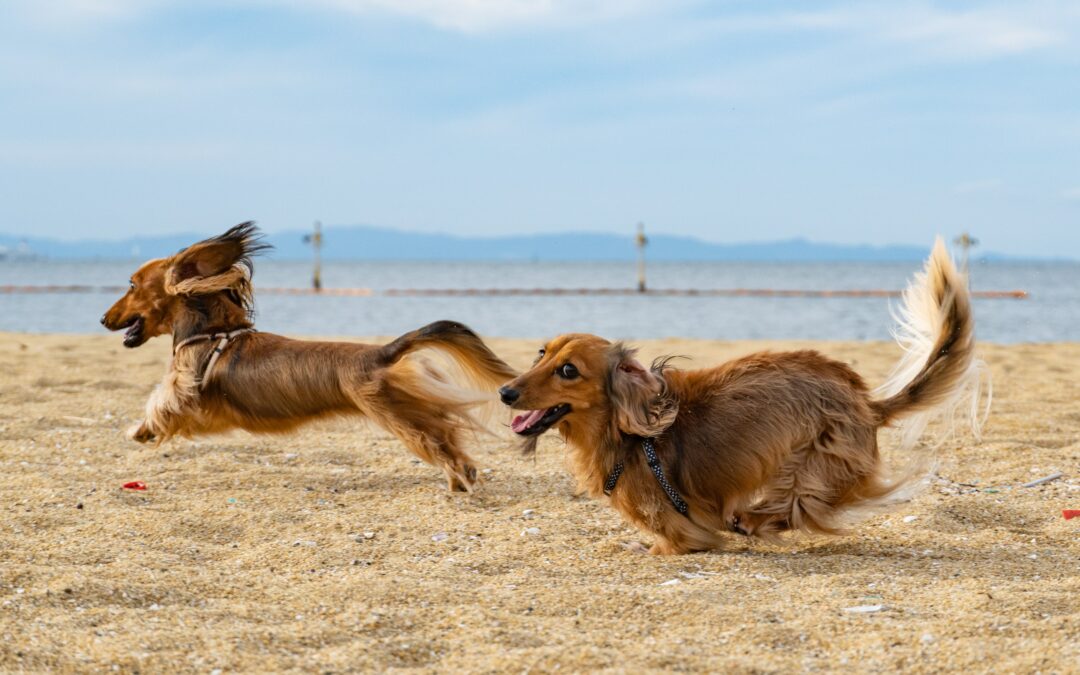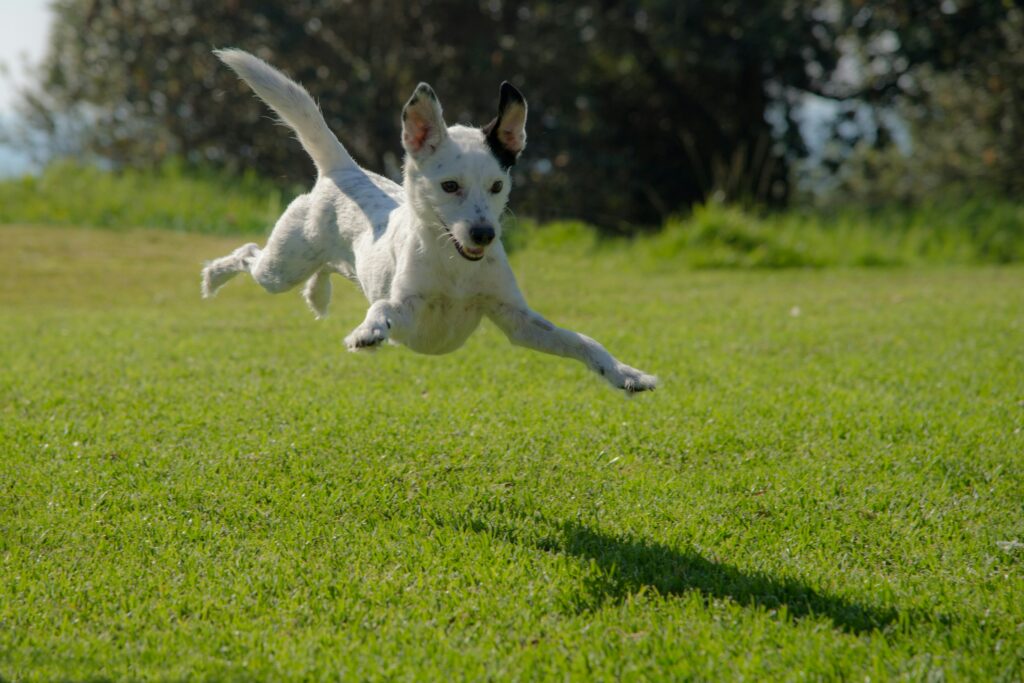If you’re a dog owner, you’ll be familiar with the ‘zoomies’.
Your furry friend unleashes a sudden burst of energy, spinning and running, and it looks like sheer euphoria! It makes everyone smile. But why do they do it?
Let’s take a look at some of the reasons behind this charming behaviour. With elements of playfulness as well as primal instincts, we can discover what drives our beloved canines to put on these joyful displays. If you’ve ever watched your doggie zoom around in uninhibited bliss and wonder ‘what the heck?’, this article is for you.
The zoomies – joy in its purest form?
Ever wondered why your canine companion suddenly bursts into a whizzing uncontrollable frenzy? The answer lies partly in their innate instinct to celebrate life and indulge in unrestrained play. This phenomenon, which seems to happen out of nowhere, shows the mischievous spirit of our furry friends and their desire to have fun.
Dogs have an innate need for play and perhaps if your furry friend isn’t doing a whole lot of socialising, particularly over the winter months, they might be more inclined to zoom! So, it can be a sign for you to engage in more enrichment, play or socialising – look out for this as a dog guardian.
Some theories behind canine zoomies
While the science behind the zoomies may not be fully understood, experts believe that it stems from a variety of factors. One theory suggests that these bursts of energy are a way for dogs to release pent-up energy and alleviate boredom. Just like us, dogs need an outlet for their enthusiasm, and the zoomies provide the perfect stage for them to showcase their exuberance. This can happen after eating, just before bed or during training; all times when there may be pent-up energy that needs to be burnt off.
Furthermore, the zoomies may also be an instinctual behaviour inherited from their wild ancestors. Just as wolves engage in playful romps to assert their social bonds and burn off excess energy, our domesticated canines tap into their primal instincts through these joyous sprints. It is a reminder of their connection with their wild counterparts and a celebration of their untamed spirit.
Embracing the zoomies – tips for dog owners
As dog owners, witnessing our furry companions in the throes of the zoomies brings us immeasurable delight. Here are some tips for embracing this delightful spectacle while ensuring the safety and happiness of both you and your four-legged friend:
1. Secure the Zoomie Zone: Create a safe and open space in your home or yard where your dog can freely zoom around without any obstacles or hazards. Make sure surfaces are not slippery as this can cause injury or damage joints.
2. Encourage Playtime: Engage in regular play sessions and provide plenty of mental and physical stimulation to prevent excess energy build-up that may trigger the zoomies.
3. Monitor the Environment: Be mindful of your surroundings and ensure there are no fragile objects or valuable items within reach during the zoomie episodes.
4. Set Boundaries: Establish clear boundaries and redirect their zooming behavior towards appropriate play areas, discouraging them from zooming in restricted or dangerous zones.
5. Join the Fun: Channel your inner child and join your dog in their zoomie adventures. Participate in spirited play and create unforgettable bonding experiences.
Smile your way through the zoomies!
While the zoomies appear to be a sign of pure, unadulterated joy, and are in most cases, keep an eye on the context. If you feel that your canine companion is indulging in frequent zoomie sessions, check they’re getting enough exercise and stimulation. Try to offer them more opportunities for play and to get rid of excess energy. That’s not to say they won’t still want to zoom! The zoomies seem to be an innate, instinctual behaviour that do bring dogs joy.
Don’t discourage the joy! Simply observe, join in if you feel like it, and make the zoomie environment safe to avoid any mishaps. It’s a super fun thing to watch and humans can’t help but smile as their doggo spins and whizzes with childlike abandon until they tire themselves out.


